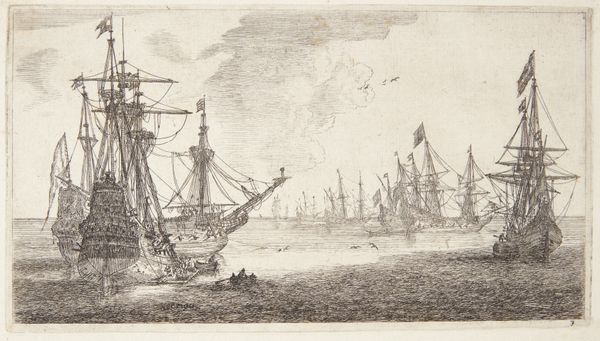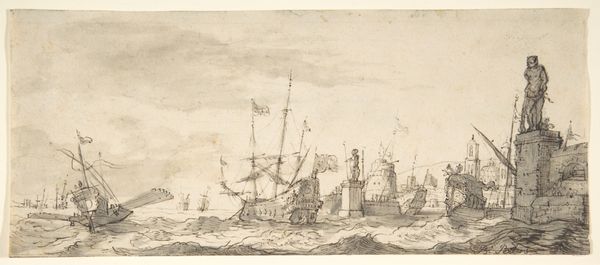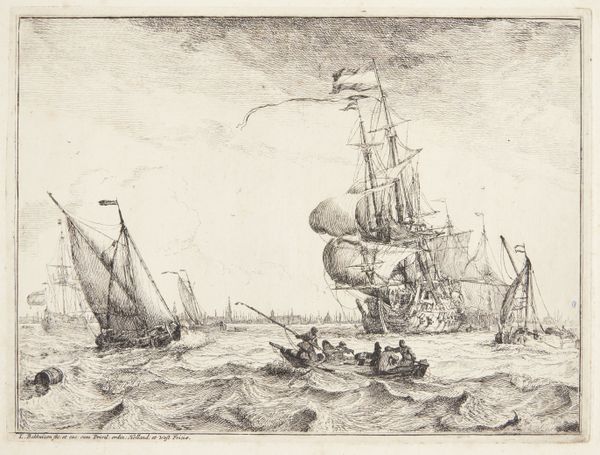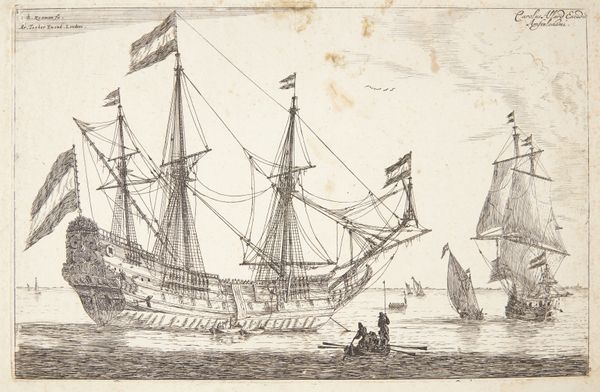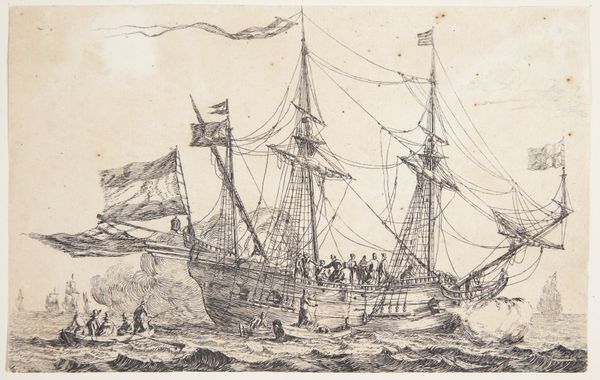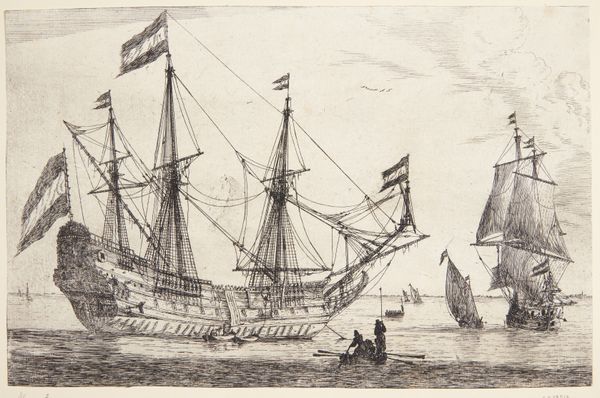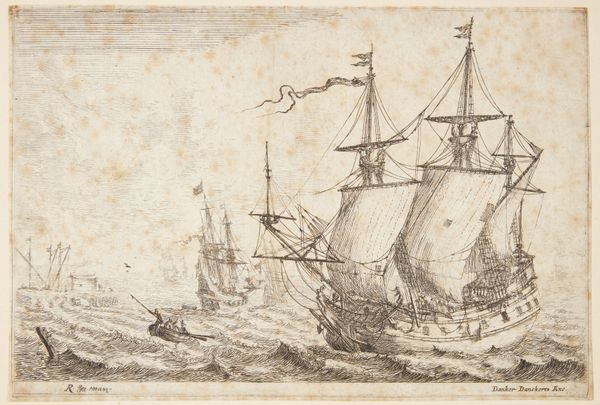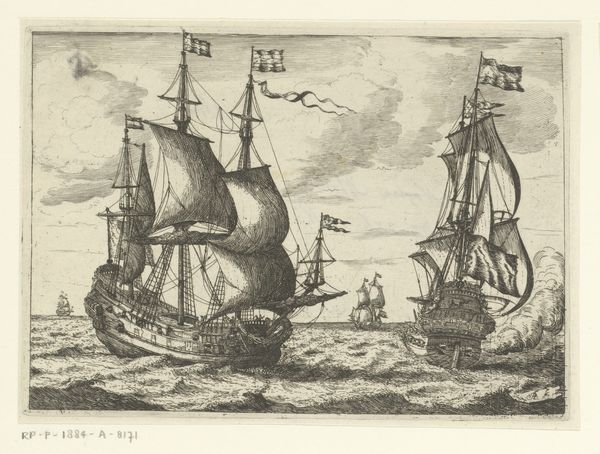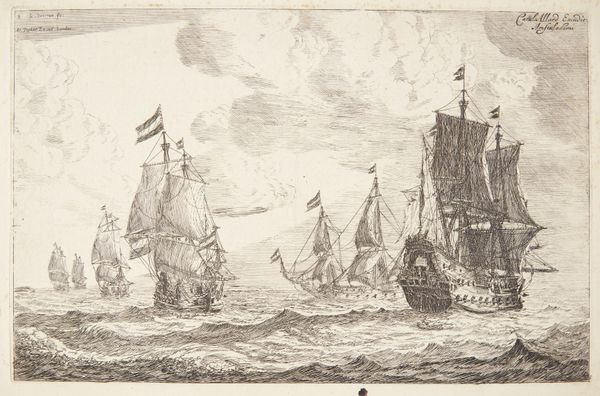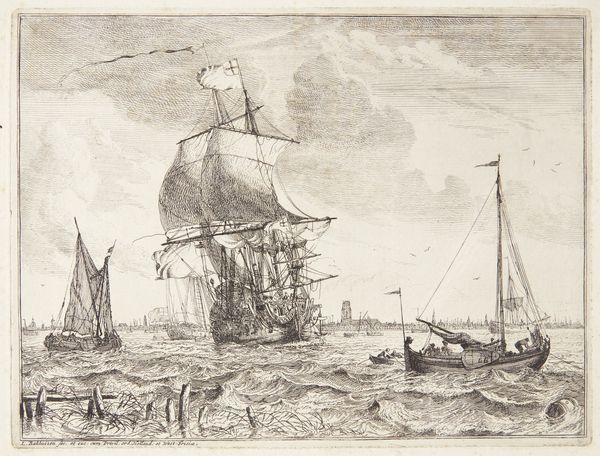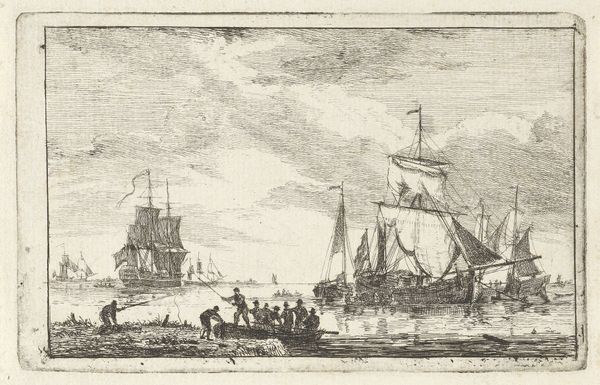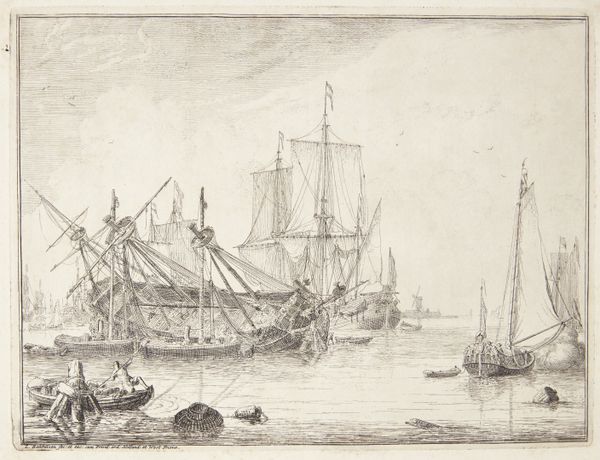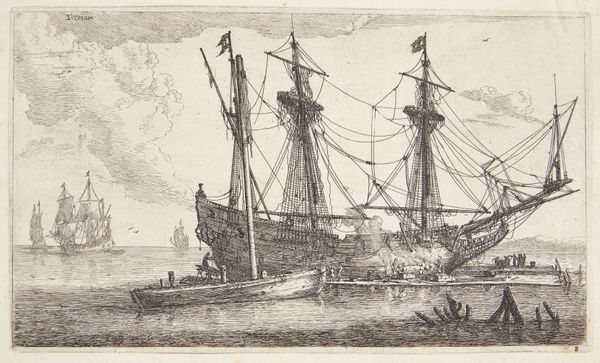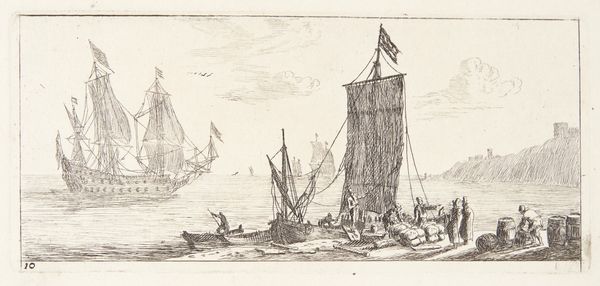
print, etching
#
baroque
#
dutch-golden-age
# print
#
etching
#
landscape
#
figuration
Dimensions: 192 mm (height) x 290 mm (width) (bladmaal)
Curator: This etching by Reinier Nooms, likely created sometime between 1623 and 1664, is titled "Three Sailing Ships at Anchor." Editor: There's an immediate stillness to it. The monochrome and fine lines give it a subdued feel. A sense of immense maritime labor captured in a single frame. Curator: Indeed. Nooms, also known as Zeeman, dedicated himself to maritime subjects. This work embodies the visual language of the Dutch Golden Age, chronicling their nautical prowess. Notice the detailed rendering of the ships. Editor: And not just the ships, but the materiality of water, too. It’s almost tactile; you can feel the rough seas suggested by these frantic lines around the ships’ hulls, and that connects directly to the labor of the sailors managing these vessels. I also notice what appears to be land on the left. Do you know anything about that? Curator: The perspective might suggest a bustling harbor, possibly Amsterdam. But let's remember the institutional forces that favored certain themes during that era. The Dutch Republic's economic success and naval power heavily influenced the art market, turning maritime scenes into potent symbols of national pride. Editor: So, we see the vessels and we understand there's something about the water, wind, wood, and rope—the tangible materials that constituted daily maritime life and how they literally floated Dutch colonial ambitions. How were pieces such as this seen by the people of the time? Curator: Prints like these would have been relatively accessible, disseminating idealized views of Dutch maritime ventures among a broader public, subtly shaping perceptions of naval strength and trade. They helped to visually construct a collective identity. Editor: It’s funny to think how even this intimate etching was ultimately involved with larger structures, from trade routes to the nation’s grand ambitions. Curator: Precisely! These pieces were vital cultural objects. Seeing Nooms’ artwork through both its detailed materiality and also the institutional currents of his time only enriches our understanding of the Dutch Golden Age. Editor: I couldn’t agree more. It’s remarkable to unpack all these material processes and political context in something as quiet as these three still ships.
Comments
No comments
Be the first to comment and join the conversation on the ultimate creative platform.
